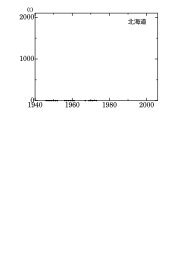7. Floral Resource Utilization by Stingless Bees (Apidae, Meliponini)
7. Floral Resource Utilization by Stingless Bees (Apidae, Meliponini)
7. Floral Resource Utilization by Stingless Bees (Apidae, Meliponini)
You also want an ePaper? Increase the reach of your titles
YUMPU automatically turns print PDFs into web optimized ePapers that Google loves.
Name /sv04/24167_u07 10/27/04 05:27PM Plate # 0-Composite pg 74 # 2<br />
74 T. Nagamitsu and T. Inoue<br />
tropical rain forests. In La Selva, Costa Rica, medium-sized bees that include<br />
meliponine, halictid, and megachilid bees are believed to pollinate 14% of plant<br />
species (Kress and Beach 1994). In Lambir, social bees that include honeybees,<br />
stingless bees, and the subsocial allodapine bees (small carpenter bees that make<br />
nests in stems) apparently pollinate the largest number (32%) of plant species<br />
(Momose et al. 1998c). However, interaction between plants and stingless bees<br />
is not only mutualistic but also antagonistic. Nectar and pollen robbing <strong>by</strong> stingless<br />
bees reduces reproductive success of many plants (Roubik 1982, 1989).<br />
<strong>Stingless</strong> bees are generalist foragers and may visit flowers of more plant<br />
species than coexisting solitary bees and wasps (Heithaus 1979). Plant taxa of<br />
nectar and pollen sources are shared among stingless bee species as well as<br />
between stingless bees and honeybees (Koeniger and Vorwohl 1979; Roubik et<br />
al. 1986; Wilms and Wiechers 1997; Eltz et al. 2001). Such generalized utilization<br />
of common resources results in interference and exploitative competition<br />
that reduces not only foraging efficiency at feeding patches (Johnson and Hubbell<br />
1974; Roubik 1980) but also pollen and nectar harvest of colonies (Roubik<br />
et al. 1986; Wilms and Wiechers 1997). Availability of either foods or nest sites<br />
is likely to limit population density of stingless bees (Hubbell and Johnson 1977;<br />
Inoue et al. 1993; Eltz et al. 2002). Effects of competition on population density,<br />
however, have not been well confirmed (Roubik 1983; Roubik and Wolda 2001).<br />
Different foraging strategies also allow stingless bee species to share the same<br />
type of resources <strong>by</strong> partitioning them in different times and places (Johnson<br />
1982). These foraging strategies differ according to variation in foraging traits,<br />
such as body size, energetic cost of foraging, aggressiveness, communication,<br />
and recruitment. With respect to variation in aggressiveness, two mechanisms<br />
have been proposed for resource partitioning. First, the more aggressive species<br />
monopolize clumped and rich resources, whereas the less aggressive species are<br />
excluded from the resources and forage on scattered or poor resources (Johnson<br />
and Hubbell 1975; Johnson 1981). Second, early-arriving, less aggressive species<br />
are temporally replaced with late-arriving, more aggressive species, because<br />
more aggressive species require more time to discover new resources than do<br />
the less aggressive ones (Hubbell and Johnson 1978).<br />
Aggressive foraging behavior of stingless bees has been rarely investigated in<br />
Asia. Behavior of stingless bees and honeybees at artificial feeders was observed<br />
in Sri Lanka (Koeniger and Vorwohl 1979) and Peninsular Malaysia (Khoo<br />
1992). Koeniger and Vorwohl (1979) suggested that aggression of stingless bees<br />
compensated for disadvantage due to smaller foraging area of stingless bees than<br />
that of honeybees. Khoo (1992) observed that more aggressive species that arrived<br />
later at feeders excluded less aggressive species that had already visited<br />
the feeders. These studies, however, were conducted using both artificial and<br />
highly concentrated resources and were not designed to examine how aggressiveness<br />
affects the partitioning of floral resources.<br />
Frequent partitioning of common resources <strong>by</strong> foraging in different times and<br />
places may be a unique feature of social insects, which often evaluate changing<br />
resource availability as they communicate the locations of optimal feeding sites<br />
1<br />
0<br />
1




